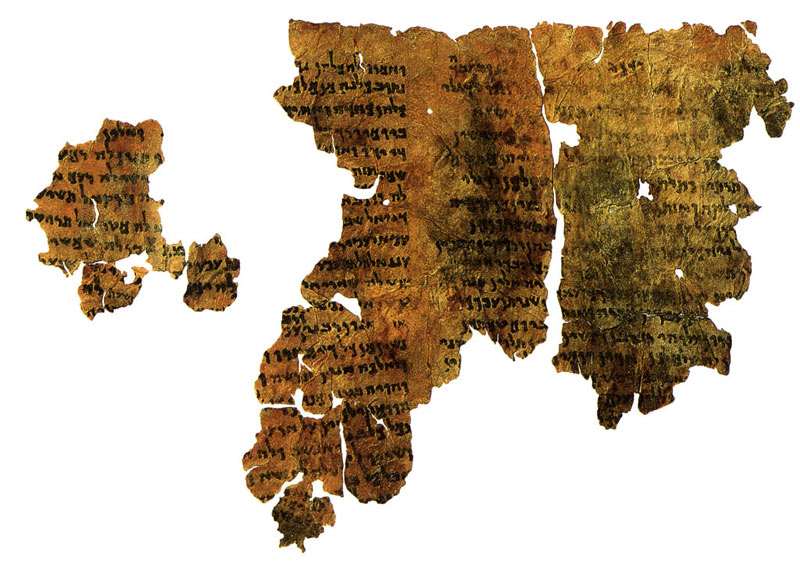
The Dead Sea Scrolls were discovered in 1947 caves near Qumran on the Dead Sea by a Bedouin shepherd. Stored for nearly 2 millennia in clay jars or pots, the scrolls survived with the help of the dry climate and have been the subject of intense study and research, mostly by biblical scholars, over the last few decades.
The conclusion has long been that the scrolls were written by a Jewish cult from Qumran known as the Essenes, who practiced their traditions between the 2nd century BCE to about the 1st century CE. This conclusion is based on many things, such as the proximity of the scroll caves to Qumran where the cult was based, the dating of the scrolls themselves, Essene customs (eg. ritual bathing) included in the scrolls, and the general congruity and thematic connection between the scrolls themselves.
On a recent National Geographic documentary, Writing the Dead Sea Scrolls, which featured “biblical archaeologist” Robert Cargill, Cargill suggests that the scrolls were written by multiple Jewish sects and that all or, at least some, of the scrolls may have originated from the Temple in Jerusalem, which legend says was under siege by the Romans around 70 CE.
One of the key pieces of evidence that Cargill cites is a recently deciphered inscription, “Lord I have returned,” found on the sides of a 2,000 year old cup. The code used on the cup is similar to that used in the Dead Sea Scrolls.
From this, Cargill seemed to conclude that the Essenes were once a part of the priestly class at the Temple in Jerusalem. I have to admit that the presentation was one in which the opinions of several scholars were drawn from, but I got the distinct impression that Cargill was in agreement with the multiple origins of the scrolls, particularly with the Temple origin. I’m going to re-watch the program, however.
While it’s possible and holds a certain level of probability, it still doesn’t explain the overall congruity of the Dead Sea scrolls, the fact that the Essenes were well-established in Qumran prior to 70 CE, and the lack of incongruent scrolls that one might expect if suddenly a group of fleeing priests were to appear in Qumran with texts they sought to preserve. I find it more likely that the Essenes were in limited contact with the outside world, at least for trading certain goods if not sharing academic and cult knowledge. This would explain the use of clay pottery from other regions.
It might even explain why a similar code appears elsewhere. Perhaps this practice of “coding” texts from non-priestly readers was adopted by the Essenes by sources that were ancestral to both the Essenes and the Temple Priests. Perhaps an Essene traveled to the Temple and left his cup, either through trade or accident. Perhaps a Temple Priest traveled to Qumran and obtained a cup as a gift. Perhaps…
I think it would be interesting if there were a way to show that fleeing priests from the Temple in Jerusalem arrived in Qumran with the Essenes. But I just don’t see that there’s enough evidence to arrive at that conclusion. I recognize, however, that archaeology surrounding mythical places like the Temple are important to “biblical archaeologists” and such reinforcement is a powerful psychological benefit to those who are invested in the religious beliefs that surround the myth of the site.
And, just to clarify, I use the term “myth” not to imply that the Temple didn’t exist. Rather, that there is a set of beliefs in a “power” surrounding the site that is, itself, mythical and not based in reality.
Leave a Reply
You must be logged in to post a comment.